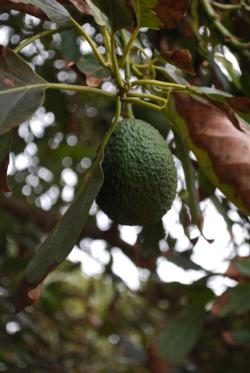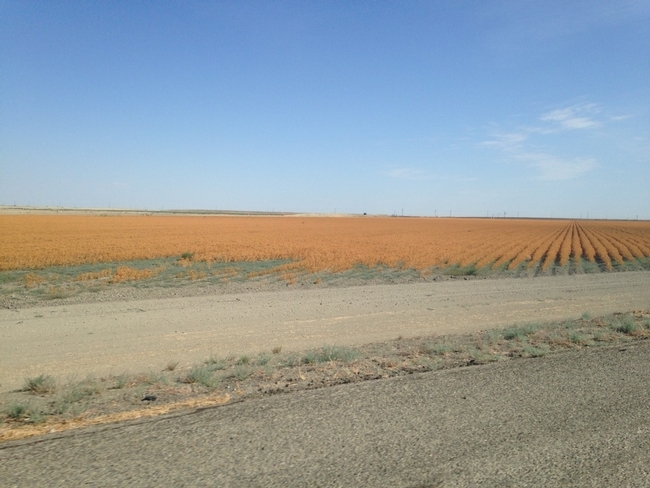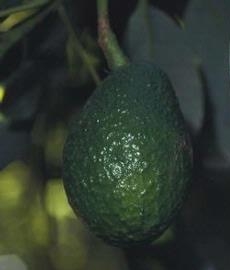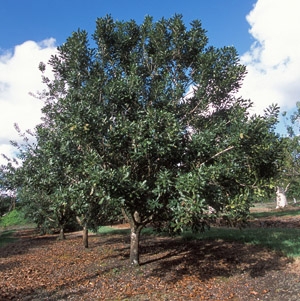Posts Tagged: Gary Bender
Drought is forcing changes in California ag
California farmers are changing the way they grow avocados to deal with three distinct problems that are cutting into profits: rising fertilizer costs, spikes in water rates, and competition from avocados grown in Peru, Chile and Mexico, says University of California Cooperative Extension farm adviser Gary Bender. He was quoted in a story on Takepart.com about looming price increases for much-loved guacamole.
It takes 74 gallons of water to produce one pound of avocados — and drought-stricken California produces 95 percent of the avocados grown in the United States, wrote reporter Padma Nagappan.
Bender has been working with several farmers to experiment with high-density avocado planting, in which the trees are pruned to grow up rather than out. Growing more trees on less land will reduce water costs.
“The only way you can compete with cheaper imports and the high cost of water is if you go high-density and get more production per acre," said a San Diego area farmer.
An article in Growing Produce said the state has issued curtailments to some farmers who hold surface water rights. Because water rights law is so complex and because this is the first time many growers have had to navigate the finer details of water rights, Brenna Aegerter, University of California Cooperative Extension advisor in San Joaquin County, suggests that growers consult a professional for targeted advice.
Because of reduction in surface water availability, many growers are turning to groundwater to irrigate their crops. However, groundwater presents its own set of challenges, Aegerter says.
“There's a shallow water table but it's not good quality,” Aegerter says. “It's salty water. I think right now the main concern is what the water quality is going to be — whether it's going to be salty, and whether that will affect the crops.”
In the Westlands Water District, growers are using a combination of increased reliance on groundwater and fallowing for their water management plans, according to Tom Turini, UCCE advisor in Fresno County.
“The groundwater is lower quality than the district water — with levels of total dissolved salts and toxic ions varying from well to well — but generally higher than ideal, ” Turini says.
Southern California farmers harvesting uncommonly small avocados
An unusual weather pattern over the last year has led to an abundance of small-sized avocados on Southern California trees, reported National Public Radio. The radio news service sought an explanation from Gary Bender, UC Cooperative Extension advisor in San Diego County.
Bender said in his 29 years on the job he has not seen such tiny avocados as those being picked this year.
Typically, several months after pollination, high temperatures in July cause a significant amount of developing fruit to drop to the orchard floor. That didn't happen in the summer of 2012. The heavy crop on the tree, combined with low rainfall, cool temperatures and sluggish photosynthesizing, has likely caused the stunting, Bender said.
NPR reporter Alastair Bland found avocados being sold 6 or 10 to a bag for $1.
"That's just ridiculous," Bender said.
Healthful macadamias can enhance a California landscape
In many of California's coastal areas, the climate is ideal for growing crisp but buttery, high calorie yet healthful macadamia nuts.
Macadamia nuts, native of Australia, have the highest amount of beneficial monounsaturated fats of any known nut. They also contain protein, potassium and minerals. A quarter cup serving is about 240 calories; for comparison, a quarter cup of almonds is about 100 calories less. Macadamia's unique texture and delicate flavor complement salads, baked goods and main dishes. The nut's oil has a long shelf life and may be used in salad dressing, for frying and as an ingredient in cosmetics.
UC Cooperative Extension horticulture advisor Gary Bender said macadamias make beautiful backyard trees, planted in the landscape or in large pots or tubs. They prefer fertile, well-drained soils and temperatures that range year-round from the 50s to the mid 70s, although established trees can withstand light frosts.
In their natural rain forest habitat, macadamia trees can grow to 60 feet in height. In California backyards, they will rarely exceed 20 to 30 feet, he said.
Gardeners who plant macadamia trees will have to be patient. Seed to tree takes 5 to 7 years; full production may take as long as 10 years. Once established, however, macadamia trees may continue bearing for over 100 years.
Although commercial macadamia production levels in California pale compared to Hawaii, where farmers harvest 54 million pounds of the nuts a year, macadamias have been grown in the Golden State continuously since 1879. The largest mainland industry is in San Diego County, where the ag commissioner reported growers harvested 192 tons of macadamia nuts from 128 acres of macadamia plantations in 2006, a crop worth $342,336.
UC Cooperative Extension in San Diego County and the California Macadamia Society will sponsor a field day for current and aspiring macadamia growers from 8:45 a.m. to 1:30 p.m. Nov. 6 at the farm of Garry and Patricia Prather, 6686 Via de la Reina, Bonsall, Calif. Registration is $20. At the field day, Bender will explain irrigation scheduling for macadamias. UC Integrated Pest Management advisor Cheryl Wilen will discuss chemical and organic weed control in macadamia production.
More information about the field day is on the San Diego County UCCE calendar. A registration form is on the Gold Crown Macadamia Association website.
Macadamia nuts are also produced in the continental U.S.
Getting macadamia nuts fresh from the farm doesn't require trans-Pacific travel. The United State's second-largest macadamia industry is in San Diego County. UC Cooperative Extension will sponsor a field day for current and aspiring growers Nov. 6, according to an article on the website Ah-Ha Rancho Santa Fe.
Held in conjunction with the California Macadamia Society and the Gold Crown Macadamia Association, the event will be at the macadamia farm of Garry and Patricia Prather, 6686 Via de la Reina, Bonsall, Calif.
Macadamia nuts are native to Australia. In 1946, a large plantation was established in Hawaii, and the crop eventually became as closely associated with the archipelago's agriculture industry as sugar and pineapples. Macadamias have been grown in California continuously since 1879.
According to the San Diego County agricultural commissioner crop report, county growers produced 128 acres of macadamia nuts in 2006 accounting for 192 harvested tons worth $342,336.
Subtropical horticulture farm advisor Gary Bender, co-organizer and a presenter at the event, said macadamias also make beautiful back yard trees, planted in the landscape or in large pots or tubs. But macadamias require patience. Seed to tree takes 5 to 7 years; full production may take as long as 10 years.
At the field day, Bender will explain irrigation scheduling for macadamias. UC Integrated Pest Management advisor Cheryl Wilen will discuss chemical and organic weed control in macadamia production. Bender said the field day promises to be a day of fun, food and information.
More information is on the San Diego County UCCE calendar.

A 1954 UC article suggested macadamias could be a viable new crop for California.




